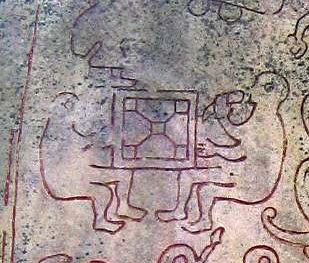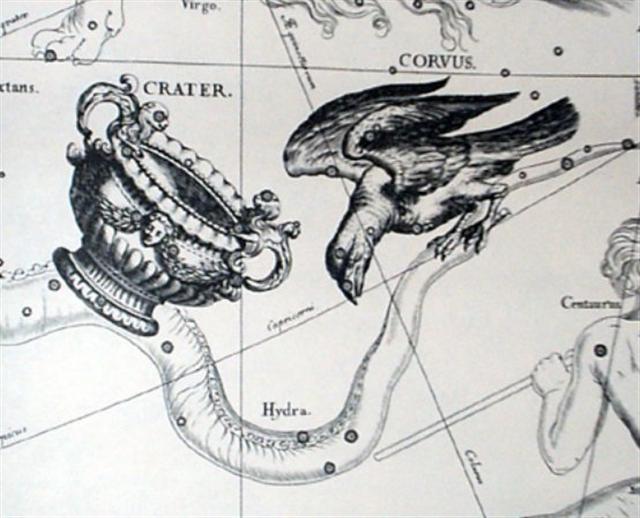5-5. The square and the compass must be calibrated together in order to perveive the whole. ... In China, every year about the beginning of April, certain officials called Sz'hüen used of old to go about the country armed with wooden clappers. Their business was to summon the people and command them to put out every fire. This was the beginning of the season called Han-shih-tsieh, or 'eating of cold food' ... For three days all household fires remained extinct as a preparation for the solemn renewal of the fire, which took place on the fifth or sixth day after the winter solstice. The ceremony was performed with great pomp by the same officials who procured the new fire from heaven by reflecting the sun's rays either from a metal mirror or from a crystal on dry moss. Fire thus obtained is called by the Chinese heavenly fire and its use is enjoined in sacrifices: whereas fire elicited by the friction of wood is termed by them earthly fire, and its use is prescribed for cooking and other domestic purposes ... There was a string of pearls - in other words like a necklace [E:35, E:36, E:48, E:49, E:51, E:52, E:86] - not only deposited on te Pei [E:12, E:51, E:86], but also at March 30 (Ea5-1), and furthermore, we know, in the center of the Belt of Orion (viz. Al-Nilam) which the Sun was due to reach in April 9 (99). This fact seems to indicate the place of a 'tail' (end).
"... Both beaver testicles and castoreum, a bitter-tasting secretion with a slightly fetid odor contained in the castor sacs of male or female beaver, have been articles of trade for use in traditional medicine. Yupik medicine used dried beaver testicles like willow bark to relieve pain. Dried beaver testicles were also used as contraception. Beaver testicles were used as medicine in Iraq and Iran during the tenth to nineteenth century. Aesop's Fables comically describes beavers chewing off their testicles to preserve themselves from hunters, which is not possible because the beaver's testicles are inside its body. This belief, also recorded by Pliny the Elder, persisted in medieval bestiaries. European beavers (Castor fiber) were eventually hunted nearly to extinction in part for the production of castoreum, which was used as an analgesic, anti-inflammatory, and antipyretic. Castoreum was described in the 1911 British Pharmaceutical Codex for use in dysmenorrhea and hysterical conditions (i.e. pertaining to the womb), for raising blood pressure and increasing cardiac output. The activity of castoreum has been credited to the accumulation of salicin from willow trees in the beaver's diet, which is transformed to salicylic acid and has an action very similar to aspirin. Castoreum continues to be used in perfume production. Castoreum can be used as an enhancer of vanilla, strawberry and raspberry flavorings. It is sometimes added to frozen dairy, gelatins, candy, and fruit beverages. Due to the difficulty and expense in obtaining castoreum, it is only very rarely used in common food products. Much of the early European exploration and trade of Canada was based on the quest for beaver. The most valuable part of the beaver is its inner fur whose many minute barbs make it excellent for felting, especially for hats. In Canada a 'made beaver' or castor gras that a native had worn or slept on was more valuable than a fresh skin since this tended to wear off the outer guard hairs ..." (Wikipedia)
... At certain places Metoro instructed us to count (hia):
Vindemiatrix culminated (at 21h) in May 22 when the Sun reached the Egg, which was visible in the night sky of day 324 → 364 - 40. And 324 (November 20) - 94 (April 4) = 230 → (360 + 100) / 2. Side a on the E tablet carries 324 glyphs, and 135 (May 15) + 324 = 459 (April 4) when Vindemiatrix ideally should be at the Full Moon:
At the tail of the Great Bear, at ε Ursae Majoris, Alioth (Fat Tail), Hevelius has pointed out a little star close by.
But this was not the Fox (Alcor, 80 Ursae Majoris) located at Mizar (ζ), and positioned 8 right ascension days later at the line down to Spica and the place where the Lucky King (Sadalmelik) culminated. ... Proclus informs us that the fox star nibbles continuously at the thong of the yoke which holds together heaven and earth; German folklore adds that when the fox succeeds, the world will come to its end. This fox star is no other than Alcor, the small star g near zeta Ursae Majoris (in India Arundati, the common wife of the Seven Rishis, alpha-eta Ursae ... If the 7-star constellation to the right of the god holding the 'square' in the Chinese illustration above refers to Ursa Major, then we can clearly see the Fox too, whereas Hevelius has the Fox inside his circle for Mizar. ... the lining up of Canopus with zeta, more often with Alcor, the tiny star near zeta (Tom Thumb, in Babylonia the 'fox'-star) has remained a rather constant feature, in Arabic Suhayl and as-Sura. This is the 'birth' of the valid representatives of both the poles, the sons of Mitra and Varuna and also of their successors ... ... The Arabs in the desert regarded it as a test of penetrating vision; and they were accustomed to oppose 'Suhel' to 'Suha' (Canopus to Alcor) as occupying respectively the highest and lowest posts in the celestial family. So that Vidit Alcor, et non lunam plenum, came to be a proverbial description of one keenly alive to trifles, but dull of apprehension for broad facts ... Could the 5-star constellation at top right in the Chinese illustration possibly refer to the 'dry open basin' between the head of Virgo and Vindemiatrix, with ρ in the center above?
The other 5-star constellation below the arm of the 'square man' surely ought to allude to the quincunx sign, which I previously has suggested should have originatet from the form of the Raven (Corvus) constellation.
Perhaps the 5-star constellation in Virgo later evolved into the 6-star constellation Crater.
|
||||||||||||||||||||||||||||||||||||||||||||||||||||||||||||||||||||||||||||||||||||||||||

.jpg)


.jpg)






